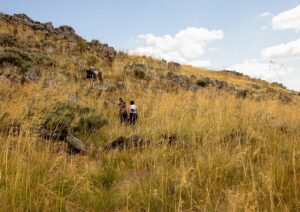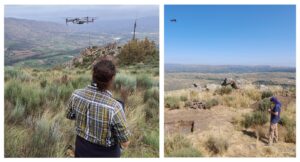The Guarda Archaeological Project (GAP project, 2023–2026) is an exciting research initiative that aims to illuminate the roles of sanctuaries, hillforts, and villages in the non-urban settlement organization of the Serra da Estrela mountains (Beira Interior, Portugal) from the Iron Age through the early Roman period and beyond. This inland region, once a key center for mineral mining and metal exploitation, lay at the fringes of the Western Mediterranean world, within the Roman province of Lusitania.
Our project combines cutting-edge methods, including intensive systematic field surveys such as point sampling, excavations, and remote sensing techniques (geophysical prospection and aerial archaeology), allowing us to map sites across multiple scales of analysis. Key sites such as Cabeço das Fráguas, Senhora de Barrelas, and Castro do Jarmelo rank among the most significant hillfort and village sites in the non-urban settlement system of central Portugal. By gathering data from these rural areas, our team applies digital geospatial technologies in GIS to explore how settlement organization evolved over time.
The project not only offers hands-on archaeological experience but also fosters a rich international exchange of ideas and expertise. We actively engage international university students from Portuguese, Dutch, Italian, and other institutions by organizing fieldwork campaigns, traineeships, and workshops. Our base is in Guarda, Portugal’s highest municipality, renowned for its breath-taking landscape of rolling granite hills.
Partners
The GAP project is a collaboration between Groningen University (GIA), the Royal Netherlands Institute in Rome (KNIR) (Dr. Anita Casarotto), NOVA University of Lisbon (Dr. Tomás Cordero Ruiz), and the Museum and Municipality of Guarda (Dr. Tiago Ramos). It forms part of the larger research program, The Impact of Roman Imperialism in the West: Settlement Dynamics and Rural Organization in Iron Age and Roman Portugal (coordinated by Prof. Dr. Tesse D. Stek, Director of the Royal Netherlands Institute in Rome (KNIR) and professor at Groningen University (GIA)).
Funding
The GAP project is generously funded by the Cultuurfonds (Regato Fund), and the Municipality of Guarda, to whom we are deeply grateful for their hospitality and for providing lab facilities essential for ceramic analysis and data documentation.














